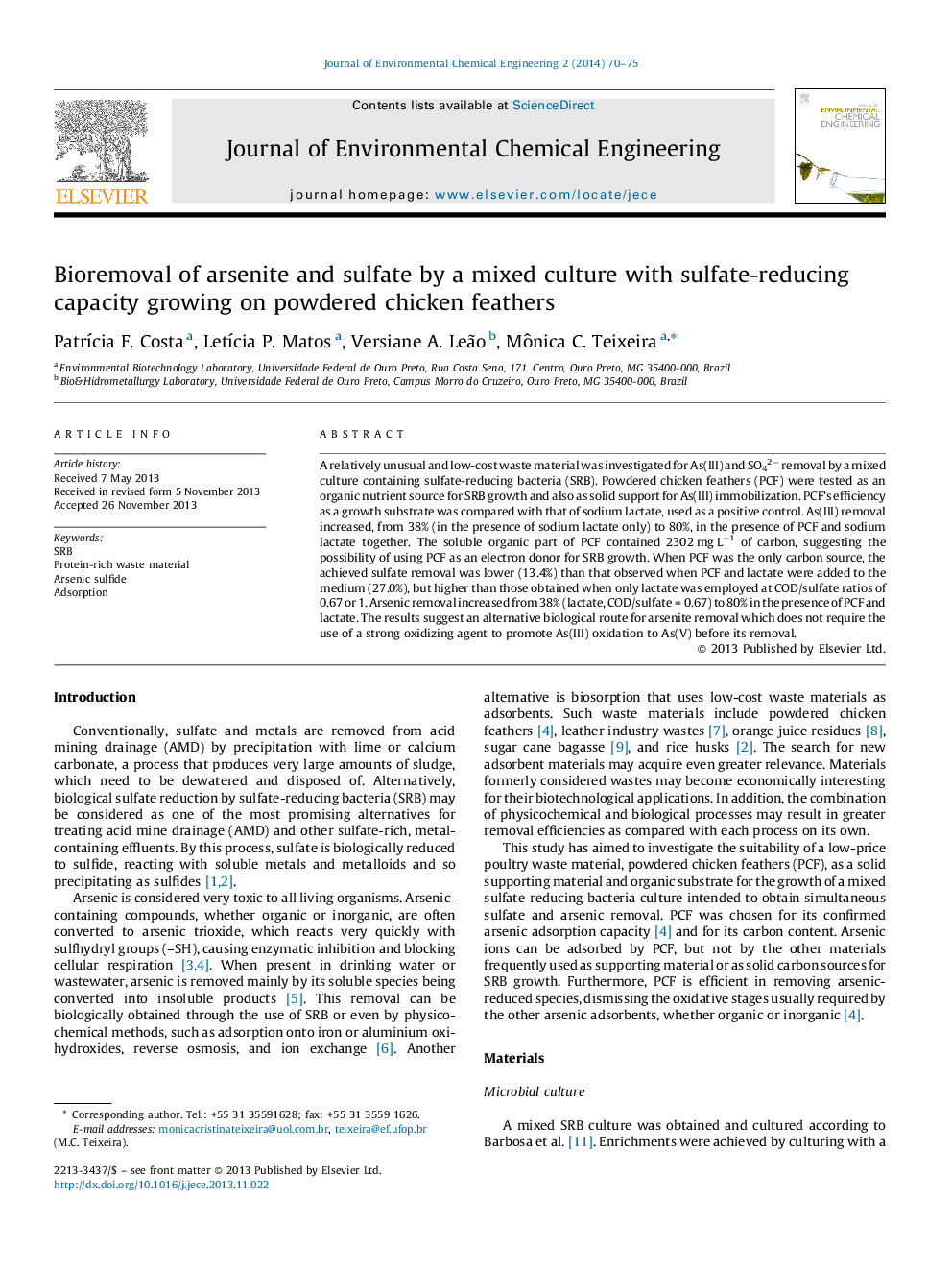| Article ID | Journal | Published Year | Pages | File Type |
|---|---|---|---|---|
| 222121 | Journal of Environmental Chemical Engineering | 2014 | 6 Pages |
•A waste material (PCF) was used for SRB growth during SO42− and As(III) removal.•PCF may lower the costs of industrial biological wastewater treatment processes.•In the presence of PCF As(III) removal is not directly related to SO42− removal.•PCF adsorptive capacity is improved in the presence of active microorganisms.•As(III) was efficiently and quickly removed without being oxidized to As(V).
A relatively unusual and low-cost waste material was investigated for As(III) and SO42− removal by a mixed culture containing sulfate-reducing bacteria (SRB). Powdered chicken feathers (PCF) were tested as an organic nutrient source for SRB growth and also as solid support for As(III) immobilization. PCF's efficiency as a growth substrate was compared with that of sodium lactate, used as a positive control. As(III) removal increased, from 38% (in the presence of sodium lactate only) to 80%, in the presence of PCF and sodium lactate together. The soluble organic part of PCF contained 2302 mg L−1 of carbon, suggesting the possibility of using PCF as an electron donor for SRB growth. When PCF was the only carbon source, the achieved sulfate removal was lower (13.4%) than that observed when PCF and lactate were added to the medium (27.0%), but higher than those obtained when only lactate was employed at COD/sulfate ratios of 0.67 or 1. Arsenic removal increased from 38% (lactate, COD/sulfate = 0.67) to 80% in the presence of PCF and lactate. The results suggest an alternative biological route for arsenite removal which does not require the use of a strong oxidizing agent to promote As(III) oxidation to As(V) before its removal.
